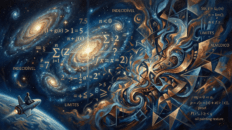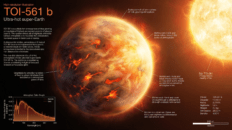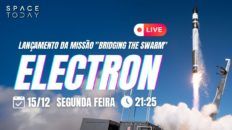 Melhor Imagem Já Feita Até o Momento da Fusão de Galáxias no Universo Distante
Melhor Imagem Já Feita Até o Momento da Fusão de Galáxias no Universo Distante
Using the NASA/ESA Hubble Space Telescope and many other telescopes on the ground and in space, an international team of astronomers has obtained the best view yet of a collision that took place between two galaxies when the Universe was only half its current age. They enlisted the help of a galaxy-sized magnifying glass to reveal otherwise invisible detail. These new studies of the galaxy H-ATLAS J142935.3-002836 have shown that this complex and distant object looks like the well-known local galaxy collision, the Antennae Galaxies.
Fontes:
http://www.spacetelescope.org/news/heic1417/
http://www.eso.org/public/news/eso1426/
Rosetta Escolhe Cinco Candidatos Para Pousar o Módulo Philae
Using detailed information collected by ESA’s Rosetta spacecraft during its first two weeks at Comet 67P/Churyumov-Gerasimenko, five locations have been identified as candidate sites to set down the Philae lander in November – the first time a landing on a comet has ever been attempted.
Fonte:
http://www.esa.int/Our_Activities/Space_Science/Rosetta/Rosetta_Landing_site_search_narrows
Testemunhando O Estágio Inicial de Crescimento de Uma Gigante
Astronomers have uncovered for the first time the earliest stages of a massive galaxy forming in the young Universe. The discovery was made possible through combining observations from the NASA/ESA Hubble Space Telescope, NASA’s Spitzer Space Telescope, ESA’s Herschel Space Observatory, and the W.M. Keck Observatory in Hawaii. The growing galaxy core is blazing with the light of millions of newborn stars that are forming at a ferocious rate. The paper appears in the journal Nature on 27 August.
Fonte:
http://www.spacetelescope.org/news/heic1418/
http://hubblesite.org/newscenter/archive/releases/2014/37/full/
NASA’s Spitzer Telescope Witnesses Asteroid Smashup
NASA’s Spitzer Space Telescope has spotted an eruption of dust around a young star, possibly the result of a smashup between large asteroids. This type of collision can eventually lead to the formation of planets.
Scientists had been regularly tracking the star, called NGC 2547-ID8, when it surged with a huge amount of fresh dust between August 2012 and January 2013.
“We think two big asteroids crashed into each other, creating a huge cloud of grains the size of very fine sand, which are now smashing themselves into smithereens and slowly leaking away from the star,” said lead author and graduate student Huan Meng of the University of Arizona, Tucson.
Fonte:
http://www.jpl.nasa.gov/news/news.php?release=2014-291&rn=news.xml&rst=4273
Meus Contatos:
BLOG: www.blog.cienctec.com.br
FACEBOOK: www.facebook.com/cienctec
TWITTER: www.twitter.com/Cienctec1
Se inscrevam no canal, deixem o joinha, compartilhem o vídeo, deixem seus comentários e favoritem.
Obrigado pela audiência.







Comente!